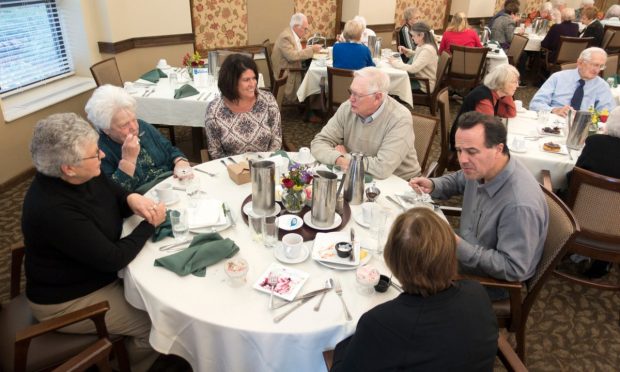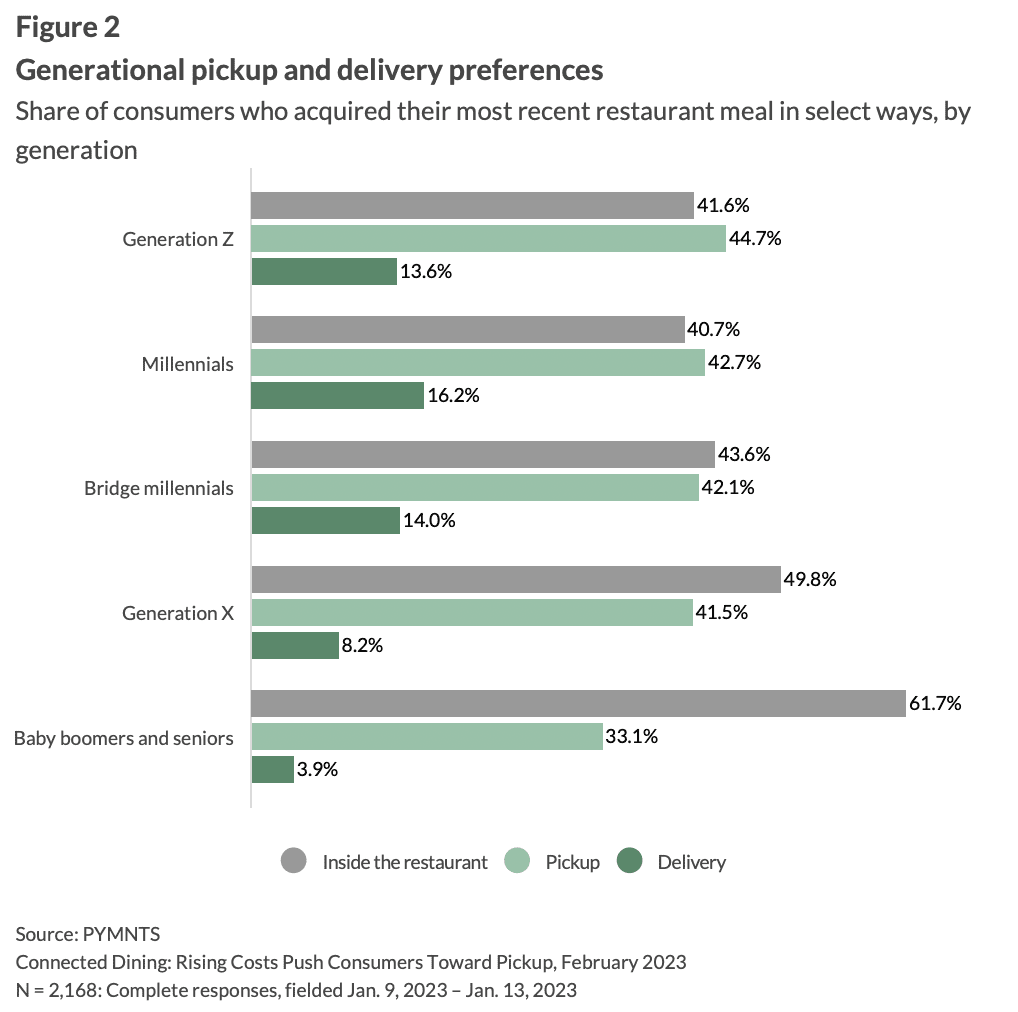Millennials Three Times Likelier Than Older Diners to Order Delivery

Restaurants looking to drive sales with older diners may want to focus on traditional channels.
The Context

Embracing digital technologies may be a useful way for restaurants to reach younger customers, but for older diners, these same innovations can be alienating. Take, for instance, the QR code menus that have proliferated in the last few years.
“People are frustrated, especially people 40 years and older,” Michele Baker Benesch, president of Menu Men, a company that designs and manufacturers print and digital menus, said of QR codes in an interview with PYMNTS. “Sometimes their phones don’t work. They don’t know how to access the QR code … and that hampers the entire customer experience.”
Delivery is no different. While the channel may have become dramatically more popular with younger diners since early 2020, older consumers continue to prefer more traditionally ordering methods.
By the Numbers
For the latest edition of PYMNTS’ Connected Dining study, “Connected Dining: Rising Costs Push Consumers Toward Pickup,” we surveyed a census-balanced panel of more than 2,100 U.S. consumers in January about their restaurant dining habits. The study found that only 3.9% of baby boomers and seniors reported ordering their most recent restaurant meal for delivery. In contrast, more than four times that share — 16.2% — of millennials said the same.
In contrast, older diners are far and away the most likely to dine inside the restaurant. Sixty-two percent of baby boomers and seniors stated that they ordered their most recent meal on premises, compared to just 50% of Gen X consumers, 41% of millennials and 42% of Gen Z.
Indeed, these same older diners were those who were most excited to return to in-person dining during lockdown. PYMNTS research during the earlier stages of the pandemic revealed that 68% of baby boomers and seniors and 56% of Generation X consumers indicated a desire to dine out more often, compared to only 44% of millennials and Generation Z consumers.

